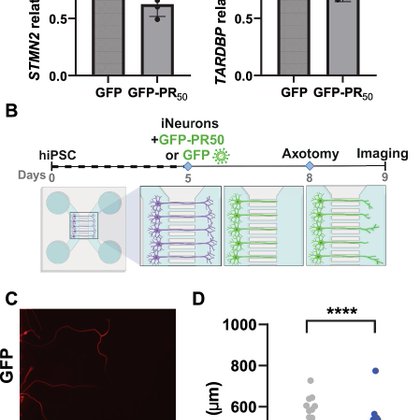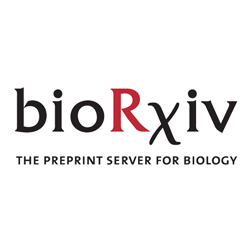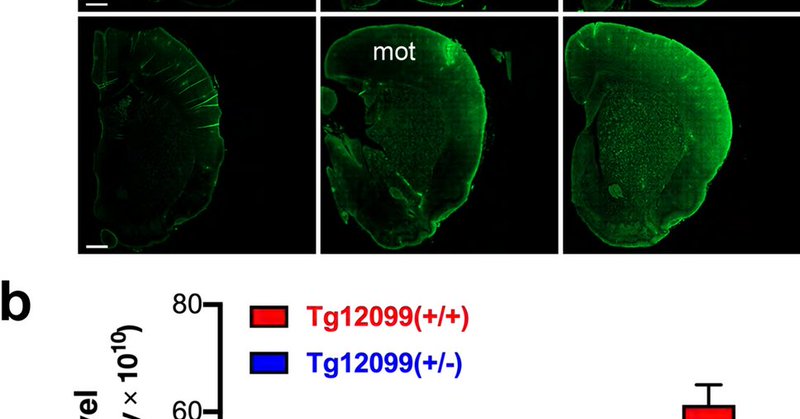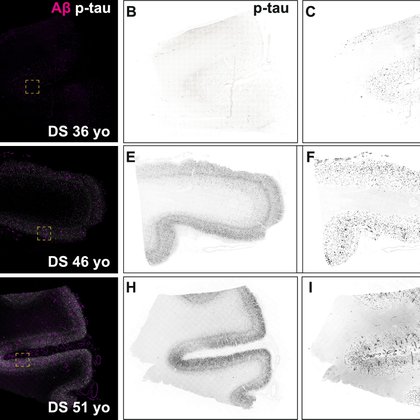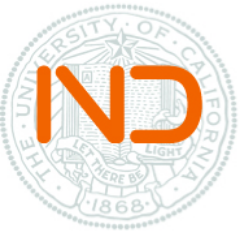
Institute for Neurodegenerative Diseases
@INDUCSF
Followers
543
Following
94
Media
7
Statuses
121
We are the Institute for Neurodegenerative Diseases @UCSF—Discovering therapies to treat brain diseases such as #CJD, #Alzheimer, #Parkinson, and #dementia
San Francisco, CA
Joined October 2012
Our Director, Dr. Stanley Prusiner, was awarded a National Medal of Science by Barack Obama in 2009. Today, @NSTMF covers Dr. Prusiner's efforts to redefine Alzheimer's disease #alzheimersdisease #UCSF #science.
1
2
6
RT @MordesLab: In this study, we observed that a C9ORF72-ALS/FTD dipeptide repeat protein perturbs the phosphorylation of RNA binding prote….
actaneurocomms.biomedcentral.com
A hexanucleotide repeat expansion in C9ORF72 is the most common genetic cause of amyotrophic lateral sclerosis (ALS), frontotemporal dementia (FTD), and combined ALS/FTD. The repeat is transcribed in...
0
6
0
RT @FEBS_Letters: 🧠 Multiple system atrophy (MSA) is a #neurodegenerative disease with α-#synuclein #amyloid filament accumulation in the b….
0
3
0
RT @GestwickiLab: Interested in learning how dyes might help in characterizing protein activity? . We're excited to share the development o….
nature.com
Nature Biotechnology - A library of fluorogenic dyes enables the measurement of protein unfolding for a large range of proteins.
0
19
0
RT @GestwickiLab: Excited to share the work done by @taiawu and Zach Gale-Day on DSFWorld: an online open-source software that streamlines….
onlinelibrary.wiley.com
Differential scanning fluorimetry (DSF) is a method to determine the apparent melting temperature (Tma) of a purified protein. In DSF, the raw unfolding curves from which Tma is calculated vary...
0
6
0
RT @GestwickiLab: Proud to share this publication by our postdoc, Shweta Devi! It offers new insights into the interaction capabilities of….
jbc.org
The protein phosphatase 5 (PP5) is normally recruited to its substrates by the molecular chaperones, heat shock protein 70 (Hsp70) and heat shock protein 90 (Hsp90). This interaction requires the...
0
4
0
RT @MordesLab: Excited to announce new funding from the NIA to investigate the connection between defects in protein homeostasis and neurod….
0
1
0
RT @gregemerz: So proud to share this. Nick and the team did fantastic work characterizing of new filament fold of MSA! Along with being ou….
biorxiv.org
Multiple system atrophy (MSA) is a synucleinopathy, a group of related diseases characterized by the accumulation of α-synuclein aggregates in the brain. In MSA, these aggregates form glial cytopla...
0
3
0
RT @MartinUCSF: Honored to be part of the first cohort of investigators funded by the Kissick Family Foundation & @MilkenInstitute Fronto….
0
7
0
RT @MartinUCSF: Phosphorylation of tau at a single residue inhibits binding to the E3 ubiquitin ligase, CHIP . @GestwickiLab @INDUCSF….
0
12
0
RT @MartinUCSF: Methods for high throughput discovery of fluoroprobes that recognize tau fibril polymorphs - from @proteins_emma @Gestwi….
biorxiv.org
Aggregation of microtubule-associated protein tau (MAPT/tau) into conformationally distinct fibrils underpins neurodegenerative tauopathies. Fluorescent probes (fluoroprobes), such as thioflavin T...
0
9
0
For its “Conversations with Giants in Medicine” series, @jclinicalinvest interviewed @INDUCSF Director, Dr. Stanley Prusiner. In the interview, Dr. Prusiner discusses his beginnings in science and the path leading to his discovery of prions and the Nobel Prize.
In this episode of JCI’s Conversations with Giants in #Medicine, @UshmaNeill talks with Dr. Stanley Prusiner @UCSF, the 1997 #NobelPrize winner in Medicine for his discovery of #Prions: . #Video:
0
1
0
RT @JAMANeuro: Most viewed in the last 7 days from @JAMANeuro:. Viewpoint describes the evidence for iatrogenic disease based on amyloid-β….
0
8
0
In a new paper, researchers from the Condello lab and Prusiner lab @INDUCSF describe the creation and characterization of a novel transgenic rat model to study human tauopathy.
link.springer.com
Acta Neuropathologica - Both wild-type and mutant tau proteins can misfold into prions and self-propagate in the central nervous system of animals and people. To extend the work of others, we...
0
1
4
Using a novel combination of optical microscopy and cryo-EM, the @SouthworthLab and Condello lab @INDUCSF found that tau filaments from Down syndrome adopt conformations identical to filaments from Alzheimer’s disease.
actaneurocomms.biomedcentral.com
Down syndrome (DS) is a common genetic condition caused by trisomy of chromosome 21. Among their complex clinical features, including musculoskeletal, neurological, and cardiovascular disabilities,...
0
0
0
RT @MartinUCSF: Excited to share our preprint:. #CRISPR i-based screen of #Autism Spectrum Disorder risk genes in #microglia uncovers roles….
biorxiv.org
Autism Spectrum Disorders (ASD) are a set of neurodevelopmental disorders with complex biology. The identification of ASD risk genes from exome-wide association studies and de novo variation analyses...
0
14
0
RT @MartinUCSF: Are you interested in in vivo #CRISPR screens in mice to uncover mechanisms of #neurodegeneration?.🐭🧬🧠. Apply for this SRA….
0
21
0
RT @MartinUCSF: The @KampmannLab at @UCSF is looking for staff research associates (technicians). Great opportunity to gain research expe….
0
21
0
RT @MartinUCSF: Excited about our new pre-print - investigating the impact of autism-linked genes on neuronal differentiation. https://t.….
biorxiv.org
Recent studies have identified over one hundred high-confidence (hc) autism spectrum disorder (ASD) genes. Systems biological and functional analyses on smaller subsets of these genes have consiste...
0
13
0
RT @MordesLab: We’re hiring a postdoc! Please reach out or share if you know someone interested in studying neurobiology and neurodegenera….
0
6
0


